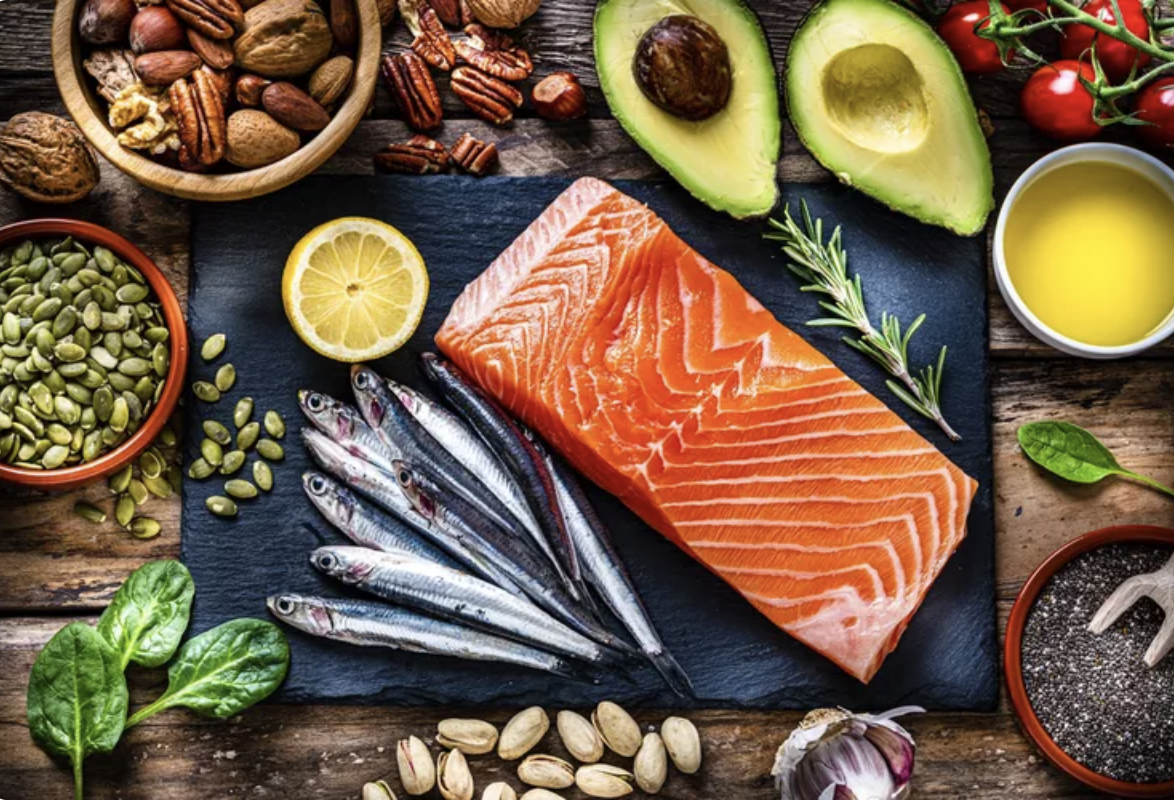Role of Fats
Fat is a source of energy
Fat is the most energy dense macronutrient, and it is also easily stored and transported within the body. The body can store unlimited amounts of fat.
Fat forms the primary component of cell membranes
Cell membranes are partly composed of a specific type of fat called phospholipids.
Fat insulates the body from extremes of temperature
Fat can protect vital organs by providing a cushion layer in cold environments.
Fat can keep you fuller for longer
Eating more fat dramatically increases satiety levels. Therefore you can eat less yet feel more satisfied in the process.
Fat is a crucial player in managing inflammation
The fat found in fish contains the essential omega 3 fatty acids, which provide health and performance benefits due to their highly anti-inflammatory properties.
Types of Fats
1. Unsaturated Fats Unsaturated fat is a fat or fatty acid in which there is at least a single double bond within the fatty acid chain.
Polyunsaturated Fat (OMEGA-3 & OMEGA 6)
OMEGA-3 Found in:
- Salmon
- Tuna
- Mackerel
- Chai seeds
- Flax seeds
- Walnuts
OMEGA-6 found in:
- Nuts
- Seeds
- Vegetable Oil (Corn, soybean, sunflower..)
Benefits:
- Lower heart rate and improve heart rhythm
- Decrease the risk of clotting
- Lower triglycerides
- Reduce blood pressure
- Improve blood vessel function and delay the build-up of plaque (a fatty substance) in coronary arteries
Monounsaturated Fat
Found in:
- Avocados
- Almonds, cashews and peanuts
- Cooking oils made from plants or seeds like canola, olive, peanut, soybean, rice bran, sesame and sunflower oils.
Benefits:
- Can lower LDL cholesterol (the bad)
- Lower risk of heart disease
- Source of vitamin E
2. Saturated Fats A saturated fat is a type of fat in which the fatty acid chains have all or predominantly single bonds. Found in:
- Red meat
- Dairy products
- Coconut oil
Benefits:
- Uniquely resistant to heat and rancidity
- Essential for proper nutrient absorption
- More satisfying, and help curb cravings
- May boost metabolism and aid weight loss efforts
3. Trans Fat
Trans fats, or trans-fatty acids, are a form of unsaturated fat. They come in both natural and artificial forms.
Found in:
- Processed foods
- Hydrogenated fats and oil (e.g. margarine)
Health Risks:
- Raise LDL cholesterol levels (the bad)
- Lower HDL cholesterol (the good)
- Increase rick of heart disease and stroke
- Higher risk of developing type 2 diabetes
A Healthy Fat Intake For a healthy individual seeking a balanced macronutrient diet, then 30% of daily caloric requirements should come from healthy fat.
This can be broken down into the three different types:
- 10% should be consumed from monounsaturated fat
- 10% should come from polyunsaturated fat (omega 3 & 6)
- 10% should be from saturated fat
- Hydrogenated fat should be avoided
This means an intake for a typical 2500kcal diet would equal 83g of dietary fat per day.





